A Self-Adapting, Pixelized Planar Antenna Design for Infrared Frequencies
Abstract
:1. Introduction
1.1. Application of Antennas in Infrared Detectors
1.2. Antenna-Based Infrared Energy Harvesting
2. Reconfigurable Pixel Antenna Concept
3. Antenna Design
3.1. Reference Antenna
3.2. Pixelized Antenna
3.3. Bolometer Switches
4. Simulation Results
4.1. Center Pixels
4.2. Symmetrical States
4.3. Additional Arrangements
5. Discussion
6. Conclusions
Author Contributions
Funding
Institutional Review Board Statement
Informed Consent Statement
Data Availability Statement
Acknowledgments
Conflicts of Interest
References
- Mubarak, M.H.; Sidek, O.; Abdel-Rahman, M.R.; Mustaffa, M.T.; Mustapa Kamal, A.S.; Mukras, S.M. Nano-antenna coupled infrared detector design. Sensors 2018, 18, 3714. [Google Scholar] [CrossRef] [PubMed] [Green Version]
- Rogalski, A. Recent progress in infrared detector technologies. Infrared Phys. Technol. 2011, 54, 136–154. [Google Scholar] [CrossRef]
- Alda, J.; Boreman, G.D. Infrared Antennas and Resonant Structures; SPIE Press: Bellingham, WA, USA, 2017. [Google Scholar]
- Bonakdar, A.; Mohseni, H. Impact of optical antenna and plasmonics on infrared imagers. Infrared Phys. Technol. 2013, 59, 142–145. [Google Scholar] [CrossRef]
- Gou, J.; Zhang, T.; Wang, J.; Jiang, Y. Spiral antenna-coupled microbridge structures for THz application. Nanoscale Res. Lett. 2017, 12, 91. [Google Scholar] [CrossRef] [PubMed] [Green Version]
- Florence, L.A.; Slovick, B.A.; Kinzel, E.C.; Bean, J.A.; Boreman, G.D. Infrared linear tapered slot antenna. Antennas Wirel. Propag. Lett. 2011, 10, 1299–1301. [Google Scholar] [CrossRef]
- Slovick, B.A.; Bean, J.A.; Boreman, G.D. Angular resolution improvement of infrared phased-array antennas. Antennas Wirel. Propag. Lett. 2011, 10, 119–122. [Google Scholar] [CrossRef]
- Kim, K.; Park, J.-Y.; Han, Y.-H.; Kang, H.-K.; Shin, H.-J.; Moon, S.; Park, J.-H. 3D-feed horn antenna-coupled microbolometer. Sens. Actuators A 2004, 110, 196–205. [Google Scholar] [CrossRef]
- Horikawa, J.; Kawakami, A.; Hyodo, M.; Tanaka, S.; Takeda, M.; Shimakage, H. Evaluation of nano-slot antenna for mid-infrared detectors. Infrared Phys. Technol. 2014, 67, 21–24. [Google Scholar] [CrossRef]
- Morf, T.; Klein, B.; Despont, M.; Drechsler, U.; Kull, L.; Corcos, D.; Elad, D.; Kaminski, N.; Pfeiffer, U.R.; Al Hadi, R.; et al. Wide bandwidth room-temperature THz imaging array based on antenna-coupled MOSFET bolometer. Sens. Actuators A 2014, 215, 96–104. [Google Scholar] [CrossRef]
- Sabaawi, A.M.A.; Tsimenidis, C.C.; Sharif, B.S. Bow-Tie Nano-Array Rectenna: Design and Optimization. In Proceedings of the 2012 6th European Conference on Antennas and Propagation (EUCAP), Prague, Czech Republic, 26–30 March 2012; IEEE: Prague, Czech Republic, 2012; pp. 1975–1978. [Google Scholar]
- Varsha, V.K.; Bhavana, S.J. Terahertz Antenna Design for Infrared Energy Harvesting Applications. In Proceedings of the 2015 Radio and Antenna Days of the Indian Ocean (RADIO), Belle Mare, Mauritius, 21–24 September 2015; IEEE: Belle Mare, Mauritius, September 2015; pp. 1–2. [Google Scholar]
- Ahmed, A.; Alzahrani, M.; Shanks, K.; Sundaram, S.; Mallick, T.K. Effect of using an infrared filter on the performance of a silicon solar cell for an ultra-high concentrator photovoltaic system. Mater. Lett. 2020, 277, 128332. [Google Scholar] [CrossRef]
- Khoshdel, V.; Joodaki, M.; Shokooh-Saremi, M. UV and IR cut-off filters based on plasmonic crossed-shaped nano-antennas for solar cell applications. Opt. Commun. 2019, 433, 275–282. [Google Scholar] [CrossRef]
- Sabaawi, A.M.; Al-Ani, O.A. Solar Rectennas: Analysis and Design. In Recent Wireless Power Transfer Technologies; Pinho, P., Ed.; IntechOpen: London, UK, 2020. [Google Scholar]
- Ma, Z.; Vandenbosch, G.A.E. Optimal solar energy harvesting efficiency of nano-rectenna systems. Sol. Energy 2013, 88, 163–174. [Google Scholar] [CrossRef]
- Citroni, R.; Di Paolo, F.; Livreri, P. Evaluation of an optical energy harvester for SHM application. AEU Int. J. Electron. Commun. 2019, 111, 152918. [Google Scholar] [CrossRef]
- Jayaswal, G.; Belkadi, A.; Meredov, A.; Pelz, B.; Moddel, G.; Shamim, A. Optical rectification through an Al2O3 based MIM passive rectenna at 28.3 THz. Mater. Today Energy 2018, 7, 1–9. [Google Scholar] [CrossRef]
- Szakmany, G.P.; Orlov, A.O.; Bernstein, G.H.; Porod, W. Nanoantenna arrays for infrared detection with single-metal nanothermocouples. Infrared Phys. Technol. 2017, 82, 44–49. [Google Scholar] [CrossRef]
- González, F.J.; Dhakal, N.; Boykin, T.; Méndez-Lozoya, J.; Peale, R.E. Infrared pixel based on seebeck nanoantennas. MRS Adv. 2020, 5, 1837–1842. [Google Scholar] [CrossRef]
- Chekini, A.; Sheikhaei, S.; Neshat, M. Nanoantenna arrays as diode-less rectifiers for energy harvesting in mid-infrared band. Microw. Opt. Technol. Lett. 2019, 61, 412–416. [Google Scholar] [CrossRef]
- Poorgholam-Khanjari, S.; Zarrabi, F.B. Reconfigurable Vivaldi THz antenna based on graphene load as hyperbolic metamaterial for skin cancer spectroscopy. Opt. Commun. 2021, 480, 126482. [Google Scholar] [CrossRef]
- Zarrabi, F.B.; Naser-Moghadasi, M.; Heydari, S.; Maleki, M.; Arezomand, A.S. Cross-slot nano-antenna with graphene coat for bio-sensing application. Opt. Commun. 2016, 371, 34–39. [Google Scholar] [CrossRef]
- Bazgir, M.; Naser-Moghadasi, M.; Zarrabi, F.B.; Arezomand, A.S.; Heydari, S. Nano particle implementation in nano loop antenna for energy harvesting application and light trapping. Optik 2017, 132, 127–133. [Google Scholar] [CrossRef]
- Haider, N.; Caratelli, D.; Yarovoy, A.G. Recent developments in reconfigurable and multiband antenna technology. Int. J. Antennas Propag. 2013, 2013, 869170. [Google Scholar] [CrossRef] [Green Version]
- Li, P.K.; Shao, Z.H.; Wang, Q.; Cheng, Y.J. Frequency and pattern-reconfigurable antenna for multistandard wireless applications. Antennas Wirel. Propag. Lett. 2015, 14, 333–336. [Google Scholar] [CrossRef]
- Han, L.; Wang, C.; Zhang, W.; Ma, R.; Zeng, Q. Design of frequency- and pattern-reconfigurable wideband slot antenna. Int. J. Antennas Propag. 2018, 2018, 3678018. [Google Scholar] [CrossRef] [Green Version]
- George, R.; Kumar, C.R.S.; Gangal, S.A. Design of a Frequency Reconfigurable Pixel Patch Antenna for Cognitive Radio Applications. In Proceedings of the 2016 International Conference on Communication and Signal Processing (ICCSP), Melmaruvathur, Tamilnadu, India, 6–8 April 2016; pp. 1684–1688. [Google Scholar]
- Lee, S.-J.; Yoon, W.-S.; Han, S.-M. Planar Directional beam antenna design for beam switching system applications. J. Electromagn. Sci. 2017, 17, 14–19. [Google Scholar] [CrossRef] [Green Version]
- Lee, S.W.; Sung, Y. A polarization diversity patch antenna with a reconfigurable feeding network. J. Electromagn. Sci. 2015, 15, 115–119. [Google Scholar] [CrossRef] [Green Version]
- Rodrigo, D.; Romeu, J.; Cetiner, B.A.; Jofre, L. Pixel Reconfigurable Antennas: Towards Low-Complexity Full Reconfiguration. In Proceedings of the 2016 10th European Conference on Antennas and Propagation (EuCAP), Davos, Switzerland, 10–15 April 2016; pp. 1–5. [Google Scholar]
- Rodrigo, D.; Cetiner, B.A.; Jofre, L. Frequency, radiation pattern and polarization reconfigurable antenna using a parasitic pixel layer. IEEE Trans. Antennas Propagat. 2014, 62, 3422–3427. [Google Scholar] [CrossRef]
- Nguyen-Trong, N.; Hall, L.; Fumeaux, C. A frequency- and pattern-reconfigurable center-shorted microstrip antenna. Antennas Wirel. Propag. Lett. 2016, 15, 1955–1958. [Google Scholar] [CrossRef]
- Rodrigo, D.; Jofre, L. Frequency and radiation pattern reconfigurability of a multi-size pixel antenna. IEEE Trans. Antennas Propagat. 2012, 60, 2219–2225. [Google Scholar] [CrossRef]
- Kovitz, J.; Rahmat-Samii, Y. Micro-Actuated Pixel Patch Antenna Design Using Particle Swarm Optimization. In Proceedings of the 2011 IEEE International Symposium on Antennas and Propagation (APSURSI), Spokane, WA, USA, 3–8 July 2011; pp. 2415–2418. [Google Scholar]
- Tewari, M.; Yadav, A.; Yadav, R.P. Frequency Reconfigurable Antenna: Using Pixel Ground. In Proceedings of the 2016 International Conference on Recent Advances and Innovations in Engineering (ICRAIE), Jaipur, India, 23–25 December 2016; pp. 1–6. [Google Scholar]
- Kumar, G.; Ray, K.P. Broadband Microstrip Antennas; Artech House Antennas and Propagation Library; Artech House: London, UK, 2003. [Google Scholar]
- Lin, S.-D.; Pu, S.; Wang, C.; Ren, H.-Y. Compact design of annular-microstrip-fed MmW antenna arrays. Sensors 2021, 21, 3695. [Google Scholar] [CrossRef]
- Kim, S.-W.; Yu, H.-G.; Choi, D.-Y. Analysis of patch antenna with broadband using octagon parasitic patch. Sensors 2021, 21, 4908. [Google Scholar] [CrossRef]
- Jamal Abdullah Al-Gburi, A.; Bin Mohd Ibrahim, I.; Zakaria, Z.; Hisham Ahmad, B.; Azwan Bin Shairi, N.; Yousif Zeain, M. High gain of UWB planar antenna utilising FSS reflector for UWB applications. Comput. Mater. Contin. 2022, 70, 1419–1436. [Google Scholar] [CrossRef]
- Mohammadi, E.; Behzadnezhad, B.; Behdad, N. An angle-sensing infrared detector using a two-element biomimetic antenna array. IEEE Trans. Antennas Propagat. 2018, 66, 5818–5826. [Google Scholar] [CrossRef]
- Bean, J.A.; Tiwari, B.; Bernstein, G.H.; Fay, P.; Porod, W. Thermal infrared detection using dipole antenna-coupled metal-oxide-metal diodes. J. Vac. Sci. Technol. B 2009, 27, 11–14. [Google Scholar] [CrossRef]
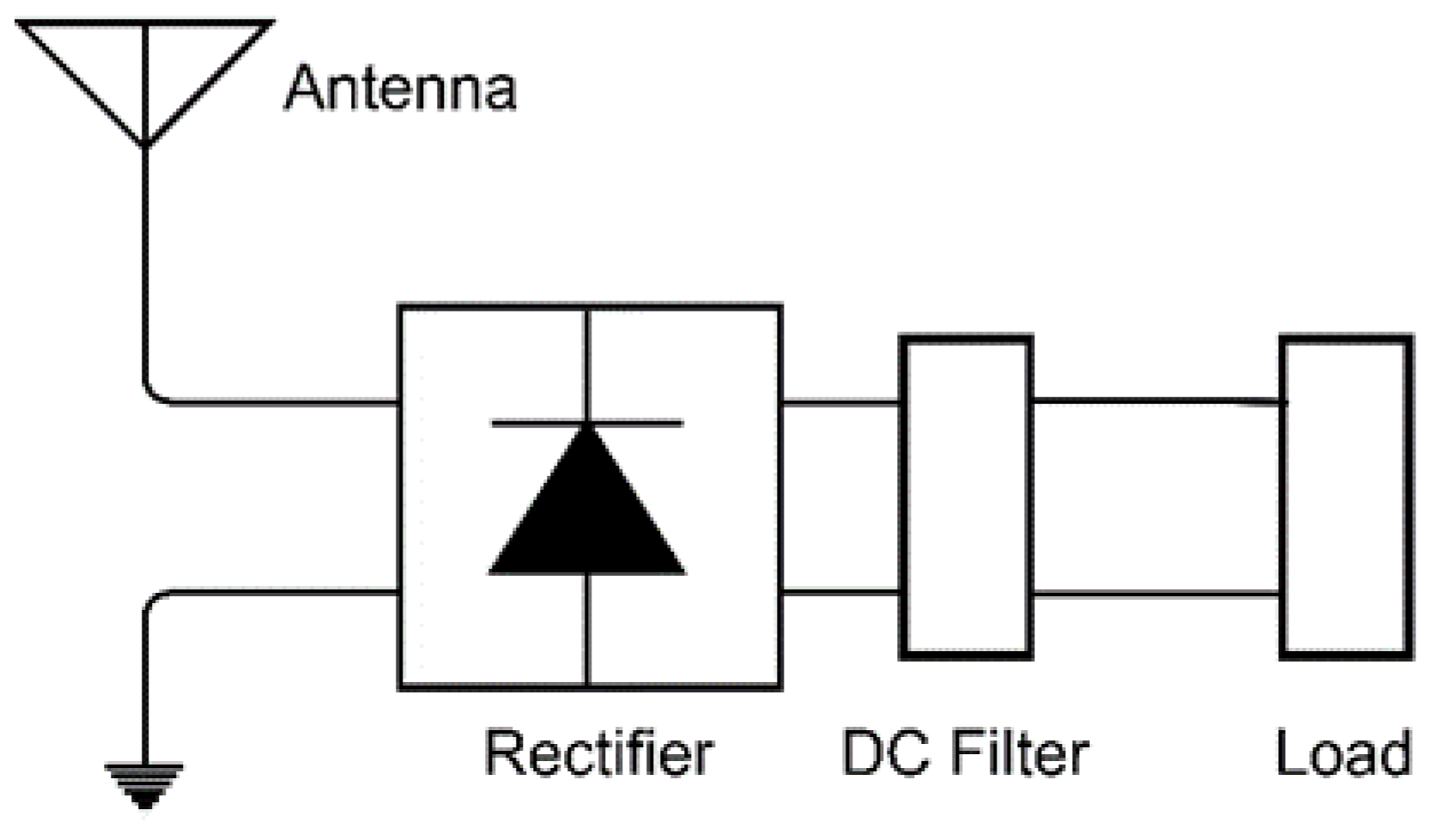
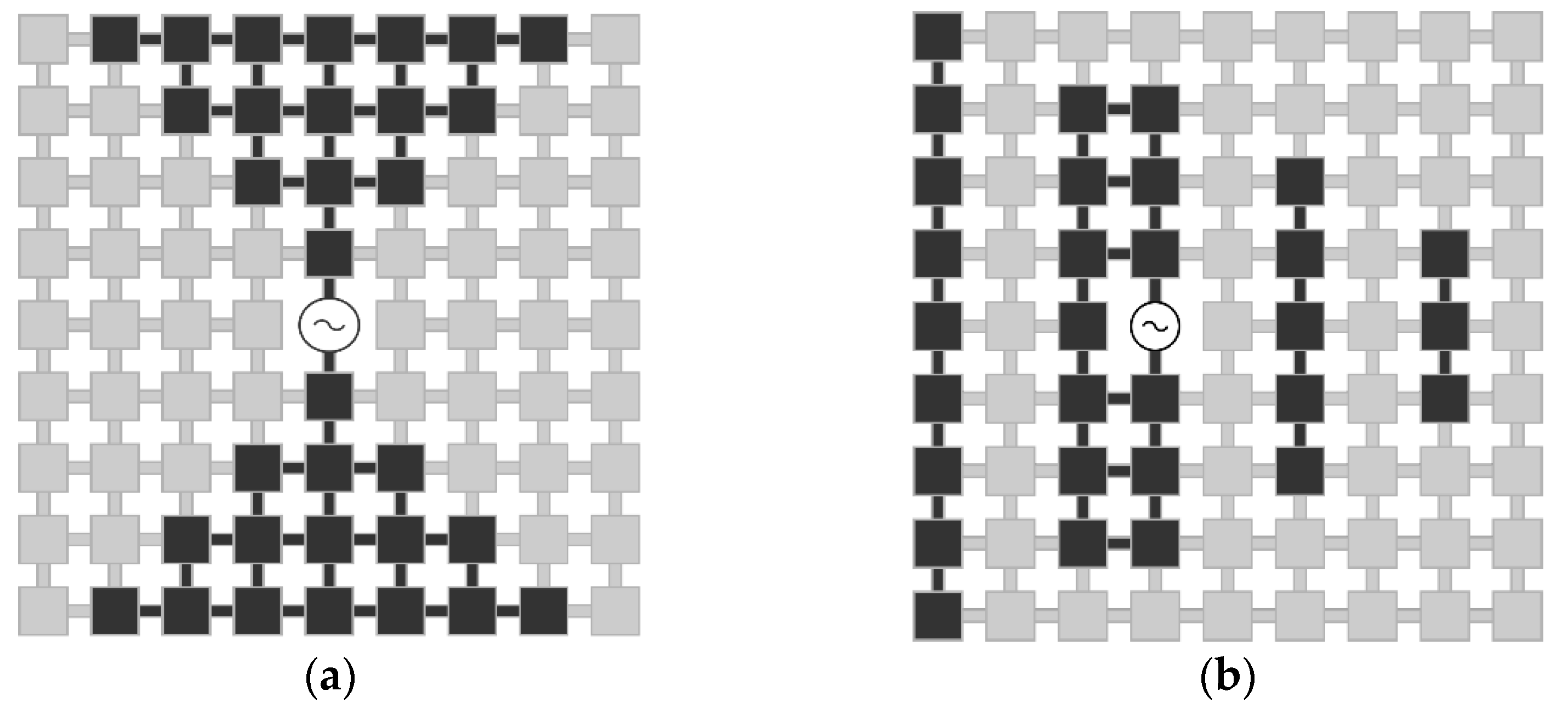
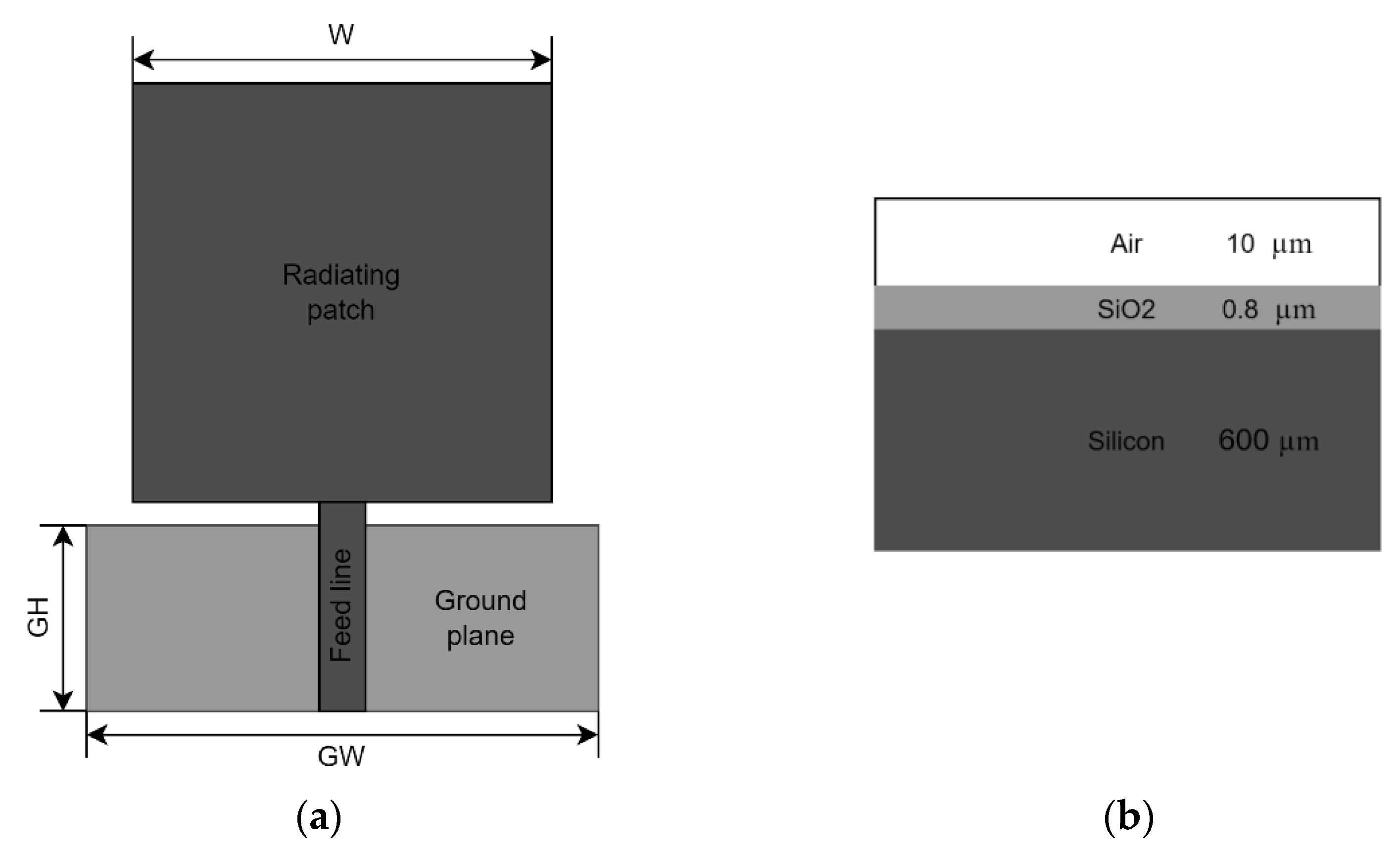





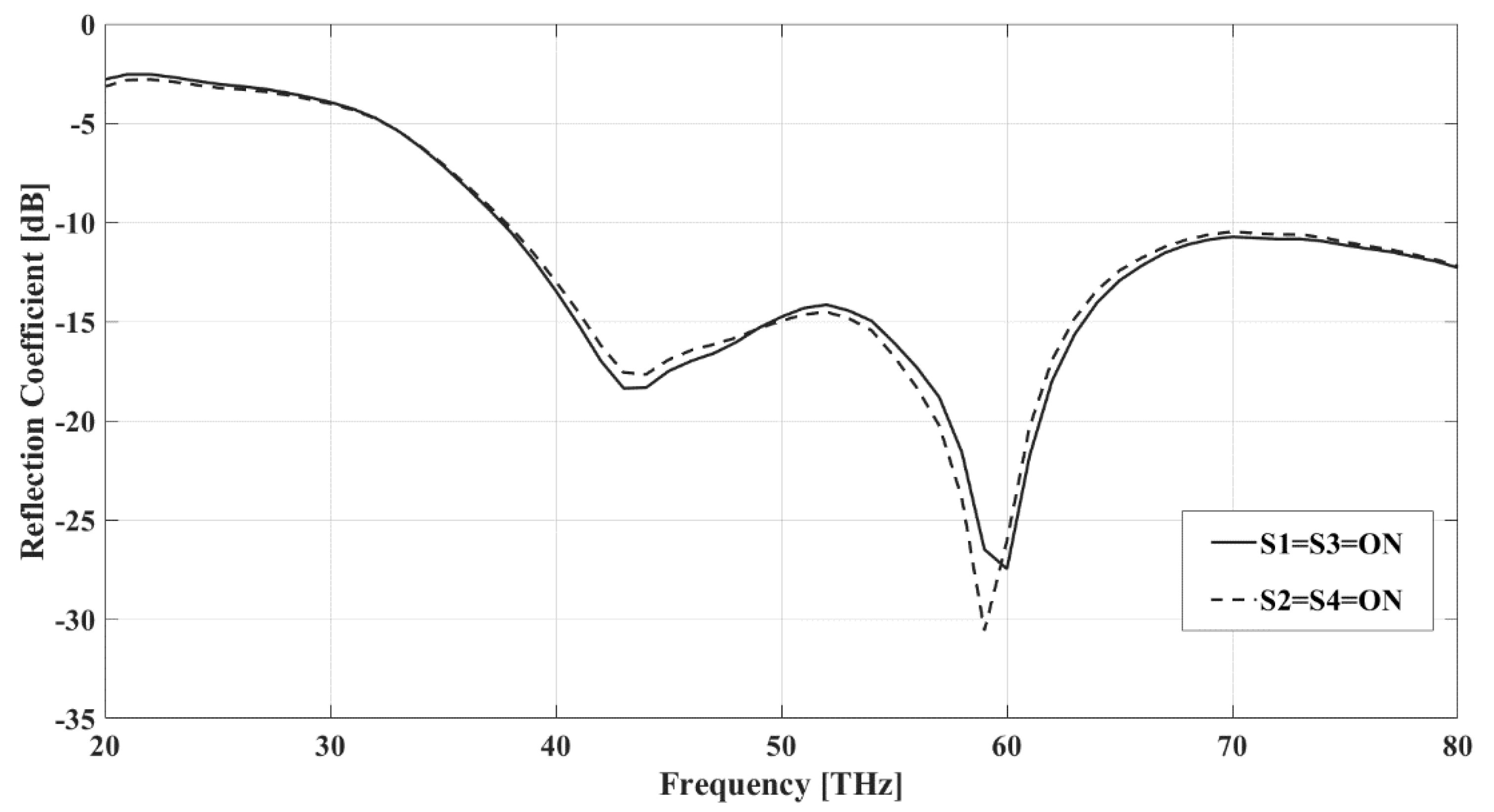

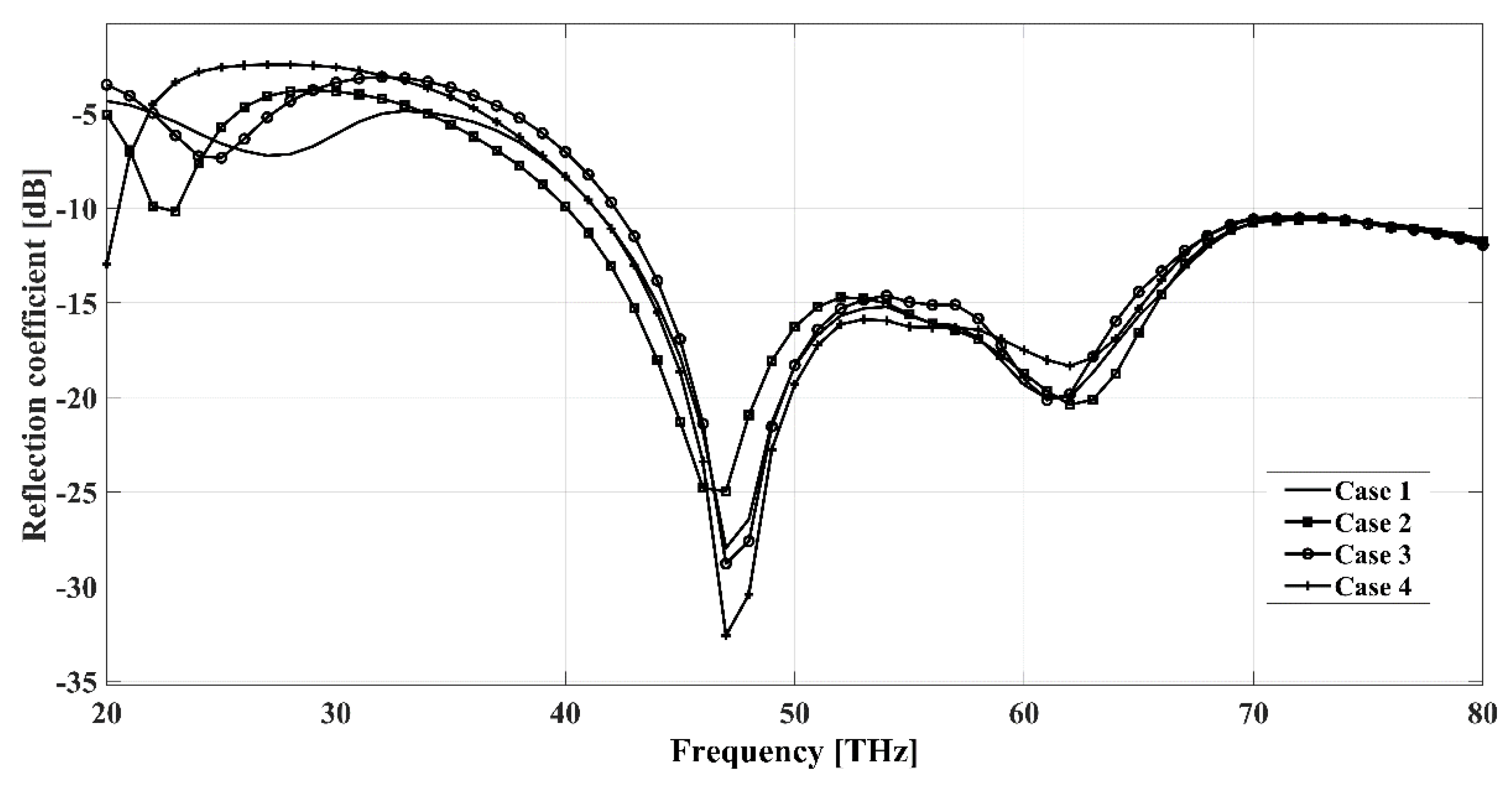

| Arrangement 1 | |
| Switch | Directionality |
| S5, S6, S7, S8, S9, S10, Sc2 | perpendicular |
| S2, S4 | perpendicular and east |
| S1, S3 | perpendicular and west |
| Sc1 | perpendicular and north |
| Arrangement 2 | |
| Switch | Directionality |
| S5, S6, S9, S10 | perpendicular |
| S2, S4, S8 | perpendicular and east |
| S1, S3, S7 | perpendicular and west |
| Sc1, Sc2 | perpendicular and north |
Publisher’s Note: MDPI stays neutral with regard to jurisdictional claims in published maps and institutional affiliations. |
© 2022 by the authors. Licensee MDPI, Basel, Switzerland. This article is an open access article distributed under the terms and conditions of the Creative Commons Attribution (CC BY) license (https://creativecommons.org/licenses/by/4.0/).
Share and Cite
Shubbar, M.; Rakos, B. A Self-Adapting, Pixelized Planar Antenna Design for Infrared Frequencies. Sensors 2022, 22, 3680. https://doi.org/10.3390/s22103680
Shubbar M, Rakos B. A Self-Adapting, Pixelized Planar Antenna Design for Infrared Frequencies. Sensors. 2022; 22(10):3680. https://doi.org/10.3390/s22103680
Chicago/Turabian StyleShubbar, Mustafa, and Balázs Rakos. 2022. "A Self-Adapting, Pixelized Planar Antenna Design for Infrared Frequencies" Sensors 22, no. 10: 3680. https://doi.org/10.3390/s22103680






